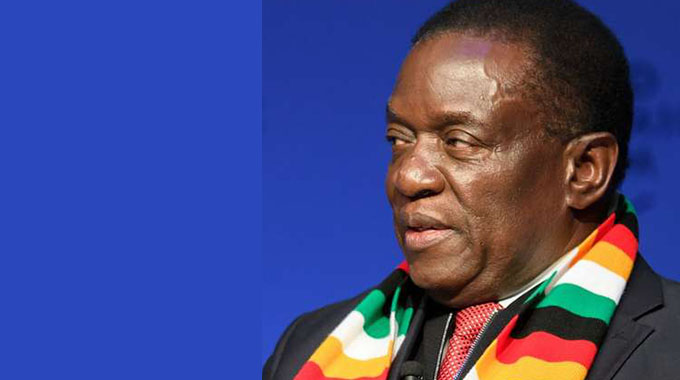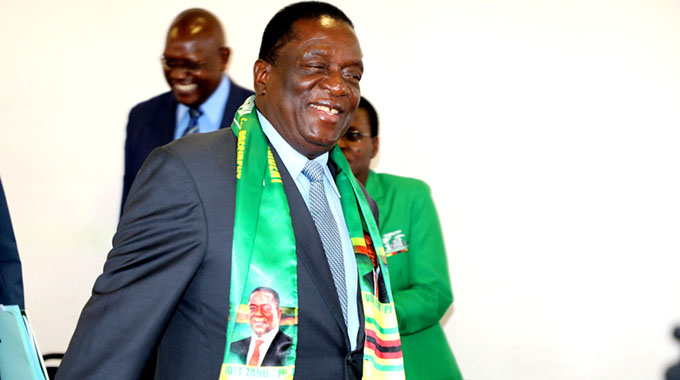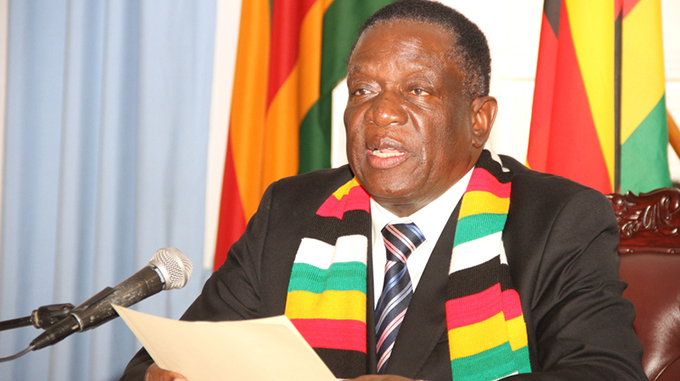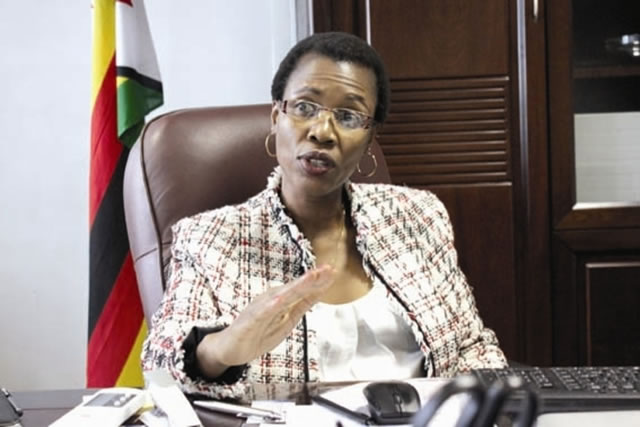Motion and science in ED’s national dialogue

Tichaona Zindoga Acting Editor
There is something remarkable about President Mnangagwa’s meeting with civil society organisations in Bulawayo last week.
Yes, apart from that soundbite of Jenni Williams — that veteran anti-Government campaigner — ending in gushing praise of the Head of State as a “listening President”.
The meeting came under the banner of the Matabeleland Collective, an umbrella body of civil society organisations, and churches from Bulawayo, Matabeleland South and North “coming together to work for healing, prosperity, bringing social justice for the people of the south”.
Williams’ Women of Zimbabwe Arise (WOZA) and Habakkuk Trust, both long-standing rivals of the status quo, are the conveners of the Matabelaland Collective.
And on the day, Government and Matabeleland met for the first time — Williams thinks it would not have ever happened under former president Robert Mugabe — and discussed crucial issues that have affected relations between Harare and Matabeleland.
These include Gukurahundi, reburials, access to documentation, devolution and harmonisation of laws among other issues.
No doubt, these are topics that have unanswered and unresolved questions for nearly four decades, sitting uncomfortably and gnawing on the national psyche for long.
Gukurahundi is the festering sore.
President Mnangagwa, quite bravely, promised that these issues would now be confronted and that his Government would take a more proactive role in addressing them rather than “burying our heads in the sand”.
That is a brave new world indeed!
Motion of national dialogue
When President Mnangagwa came into office, first in November 2017, and after winning elections in July 2018, he promised to do things differently.
One of his key promises was to engage stakeholders across the national spectrum in dialogue so that the country would move forward, overcoming the polarity and differences that had so marked compatriots apart.
There are reasonable grounds to believe that if the conditions were right, President Mnangagwa post-November 2017 would have significantly altered the way Zimbabwe conducts its politics — starting with some kind of consociational politics — but for some supervening influences, including personal egos of certain individual players and interests.
Yet President Mnanangwa has not given up on the idea of dialogue.
Today, the process is moving on and gaining momentum.
The Head of State has had dialogue with leaders of political parties that contested in last year’s elections; churches, students and the civil society.
Further, the President has his Advisory Council (PAC), comprised of technocrats, experts and thought leaders.
There are indications that an event on the framework of the national dialogue and choice of a convener is due to be held this week, adding to the technical work underway to bring effect to the dialogue between political parties.
However, some key questions arise.
What is the force, impact and effect of the dialogue?
Will the dialogue result in fundamental changes in how Zimbabweans relate politically, socially and economically?
What sort of national animal emerges from the national dialogue?
These questions are well grounded.
How then does one begin to assess the nature and direction of the national dialogue being pursued by President Mnangagwa?
Perhaps a bit of science would do.
- Sperling, A. Voos, and D. C. Bradley — in separate publications — explain the theory of “motion perception” that I find useful to apply here (even loosely, if that can be forgiven).
Sperling says a motion perception model is “a theory or computation that relates visual stimuli or visual scenes that contain motion to the motion perceptions and motion-related actions of observers”.
“We can know about another person’s perceptions only by his or her observable responses,” he explains in part.
Voos explains that biological motion perception refers to the visual perception of a biological entity engaged in a recognisable activity. “This definition includes the observation of humans walking and making eye and mouth movements, but the term can also refer to the visual system’s ability to recover information about another’s motion from sparse input,” says Voos.
Perception motion, which also considers a matrix of intentions, it is also used for predicting what people will do in the future, according to the author.
And Bradley says visual motion perception involves much more than just seeing movement.
“Though people are not generally aware of it, a great deal also goes on ‘behind the scenes,’ involving a series of elaborate computational stages that not only detect image movements, but also analyse image velocity patterns to extract surprisingly complex and useful information about the outside world,” Bradley clinches it.
Meaningless dialogue?
On February 15, the NewsDay screamed with a headline, “No to ‘meaningless’ dialogue: Chamisa”.
The story said: “Opposition MDC leader Nelson Chamisa yesterday said he would not be bulldozed into ‘a meaningless dialogue’ with President Emmerson Mnangagwa, vowing that any talks with the Zanu-PF leader to resolve the current political stand-off would only start after government has stopped the arbitrary arrests and persecution of his party members.”
In fact, Chamisa (and the NewsDay commissars) were responding to the inaugural meeting of national party leaders held on February 14 where President Mnangagwa rallied the opposition to dialogue.
Chamisa’s idea of dialogue — shared with his supporters — is that national dialogue is the one which should only result in power-sharing between Chamisa and President Mnangagwa.
Anything else is considered meaningless, useless and a waste of time.
According to Chamisa and his supporters there currently has not been “meaningful” national dialogue because it has not taken the form of power-sharing which they want.
It will be useful to explain this attitude in terms of the motion perception theory outlined above — and we are doing it quite loosely:
(a) Chamisa and his supporters would want a grand event whereby the opposition leader will be invited to State House or the Harare International Conference Centre and a huge deal is auspiciously announced about another “Government of National Unity”. That would make him and his constituency happy
(b) Chamisa and his supporters want a political settlement that has the effect of gaining respect from the other side, or even humiliating them after winning major concessions as a result of concessions
(c) Chamisa and his supporter’s idea of dialogue is an arrangement that puts him in a powerful position for the next election — and that is his “matrix of intention”
(d) In contrast to “behind the scenes” activity and negotiations Chamisa and his supporters want a public show that underlines his status as a powerful figure
(e) Chamisa and his supporters would want a deal hammered quickly (with velocity) enough for gains and entitlement.
In the absence of these favourable conditions, Chamisa will dismiss national dialogue as meaningless in the essence that it does not fit his narrow conception and perception of power sharing.
It is like a zero-sum game for him.
A methodical President
Those who know President Mnangagwa say he is a methodical man. He likes to be meticulous in executing his plans and, as many of his supporters will testify, sometimes his patience and method can be really frustrating.
He has even been calm in the face of great danger to his life.
We all know what happened in 2017 when he was being publicly lynched by the Mugabes and attempts were made on his life.
In August of that year he was poisoned.
In June 2018, he survived a bomb attack at White City Stadium in Bulawayo.
He has publicly said that he knows who are the people who tried to take away his life — some of them his friends. And yet, the man who is also known as Ngwena, is patient and unflappable.
The moniker says it all, does it not?
Only when it comes to the question of national dialogue — and the national question — the President is not self-seeking.
His call for dialogue, even in the moment of triumph, points to higher national ideals that are missing on the other extreme of the political spectrum.
He is fundamentally motivated by something that is not power because he has it.
He sees all partners as equals in national dialogue.
His intentions are broader and beyond the next election.
Additionally, President Mnangagwa is working behind the scenes and is not too worried about the speed rather than the direction of the dialogue.
This is all science. It is systematic and his interactions with various groups show that his method is being replicated on each occasion.
When one considers what happened in Bulawayo as the Head of State met the Bulawayo Collective in a historic interface — which actually had the effect of unsettling fringe groups that thrive in disunity — it all comes to something remarkable that President Mnangagwa is set to achieve for himself and the country.
Consider also that he has even gone further to state that he and the Government will not bury heads in the sand regarding the emotive issue of Gukurahundi.
President Mnangagwa’s concept of national dialogue, with all its movement and science, is something that serious students of politics and nation-building (and healing) will need to watch.











Comments